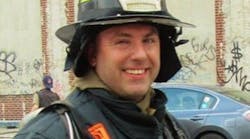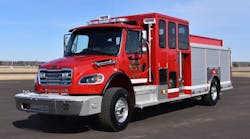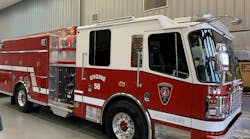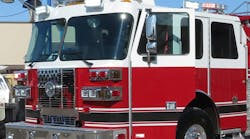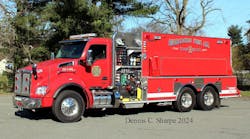One of the most frequently asked questions I receive is whether to buy an apparatus with a custom fire apparatus chassis or a commercial fire apparatus chassis. Why, you may ask, is this under the Emergency Vehicle Operations column heading and not The Apparatus Architect? Everything that I write and lecture about has one goal and that is firefighter safety, and this topic seems to fit best here. The whole intent of this column is to promote firefighter safety, save lives and reduce on-the-job injuries.
With all the great work that is being done by the National Fallen Firefighters Foundation (NFFF), the federal government, the unions, manufacturers and other fire service organizations to reduce firefighter line-of-duty deaths, we still lose on average about 100 members every year. This is truly alarming.
Today’s apparatus represent the biggest financial investment for most fire departments and municipalities. As the cost of apparatus continues to increase, municipalities and fire departments struggle to balance the purchase of safe, cost-effective apparatus with the need to be mindful of budget constraints. Generally, custom-chassis apparatus cost from $20,000 to $40,000 more than commercial chassis, depending on options. What are custom-chassis apparatus and why would you pay a premium for them? Custom-chassis apparatus also are referred to as “cab-forward apparatus,†as the cab is forward of the engine. Commercial-chassis apparatus are also called “engine-forward apparatus.â€
I have been fortunate, thanks to many of you, to have amassed thousands of photos of wrecked fire trucks. They tell the same story: If you are riding in a custom-chassis apparatus with your seatbelt on, and the apparatus rolls over completely – short of hitting a fixed object like a tree or bridge abutment – in many cases, you can unbuckle and walk away. Due to the design and construction of the roof posts on commercial chassis, the A post tends to bend or roll during impact, causing the roof to shift in the direction opposite of the impact. During rollover, the A and B posts roll with the vehicle. Generally, commercial-chassis apparatus are not designed to support the weight of the roof during a rollover.
Why do custom apparatus tend to withstand the effects of rollover? Fully enclosed, four-door-cab apparatus are generally constructed with aluminum or stainless-steel tubing in the roof area to support the weight of the roof and any equipment. In addition, the material thickness and design of the A post at the windshield and the other supporting cab sidewalls are generally designed of heavier material with additional interior support to provide protection for the crew. Also, many custom-apparatus manufacturers have done some form of crash testing on their cabs. Some custom-chassis manufacturers offer airbag rollover protection packages. Crash testing and airbag rollover packages generally protect personnel riding inside an apparatus cab.
Two case studies show the difference. The first incident occurred in Alabama, where firefighters were responding to a brushfire when their commercial apparatus rolled over while rounding a curve. A firefighter was crushed and trapped in the cab for two hours. She died, even though she had her seatbelt on. In the second incident, an engine in Arizona was responding to a medical call when the brakes on a car in an opposing lane locked and the driver turned the wheel while in the skid. When the civilian driver let off on the brakes, the car steered right in front of the engine, which was nearly knocked into a utility pole. The driver of the custom apparatus, due to excellent driving skills, was able to avoid a direct hit of the pole. As he swerved to avoid the pole, the engine went across the road and into a fence before rolling over twice. The back end of the apparatus was destroyed, but the cab was intact. The only intrusion into the cab was that the front windshield popped out. All on board the engine were wearing seatbelts. The members of the engine company were all able to unbuckle and walk away, while the most serious injury was a shoulder separation.
This is not to say that every incident will have the same results; however, two important facts cannot be understated. First, a comprehensive driver training and re-qualification program will help ensure that a fire department’s drivers have been given the appropriate level of training for the important tasks that they undertake every time they get behind the wheel of an emergency vehicle. Second, making sure that required safety devices are on every piece of apparatus and enforcing standard operating guidelines (SOGs) that require all personnel to be seated and secured will help to ensure that “everyone goes home†from every run.
Michael Wilbur, a Firehouse® contributing editor, is a lieutenant in the New York City Fire Department, assigned to Ladder Company 27 in the Bronx, and has served on the FDNY Apparatus Purchasing Committee. He consults on a variety of apparatus-related issues around the country. For further information, access his website at www.emergencyvehicleresponse.com.
